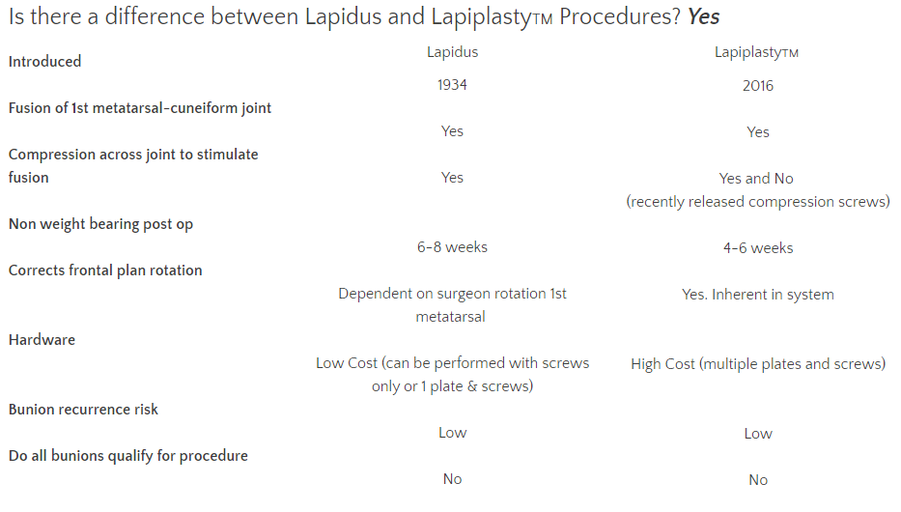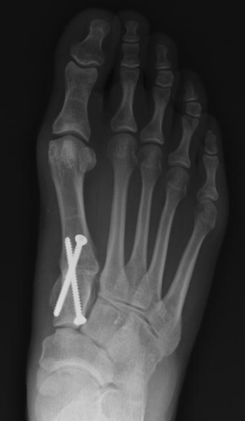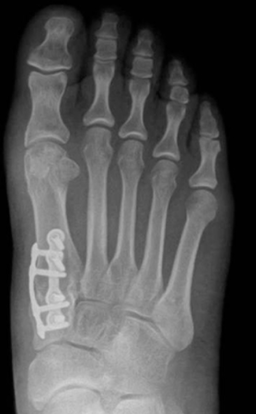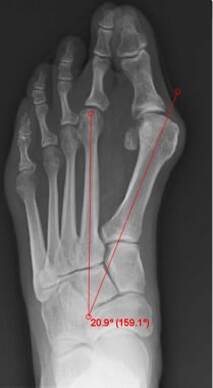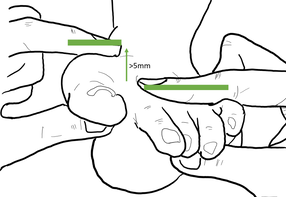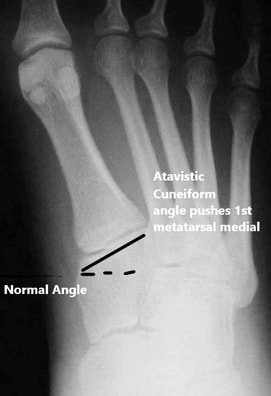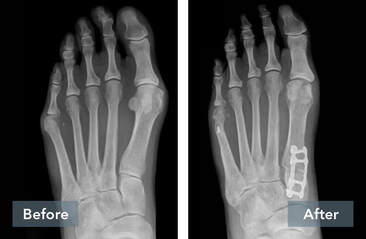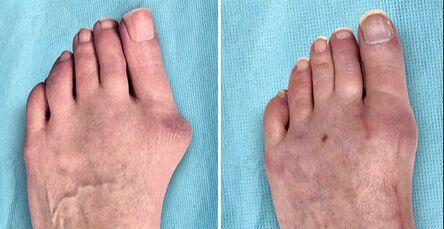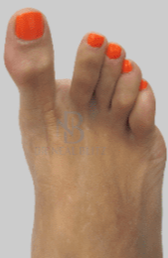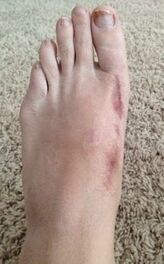The Lapidus Bunion procedure which was first described in 1934 has been re-invented with 3D rotation of the 1st metatarsal and now marketed as the LapiplastyTM procedure
See the below X-rays for the difference in hardware between Lapidus and LapiplastyTM
which are achieving the same outcome:
which are achieving the same outcome:
IMPORTANT: No Bunion Surgeon should ever offer only one surgery for bunions. Different Procedures are indicated pending imaging and clinical appearance of your foot. This is not a one procedure fits all deformity.
*Indications for a Lapidus or LapiplastyTM Procedure:
The Lapidus or LapiplastyTM Procedure Can Have Dramatic, Positive Outcomes
Dr. Thomas reports "The Lapidus or LapiplastyTM procedure has worked great in my patients in the past who were candidates for the surgery. However, only a small percentage of bunion patients I see require this more invasive fusion surgery, In order to achieve fusion and decrease risk for non-unions I prefer the Lapidus procedure with compression compared to the LapiplastyTM given less operating room time, hardware, and potential complications. This is different for each surgeon as I have colleagues who tell me their patients do well with the LapiplastyTM procedure."
Some of the common complication of the Lapidus (or LapiplastyTM) Bunion Procedure:
- Large, thicker scars
- Nerve entrapment
- Residual post op swelling
- Stiffness, decreased range of motion
- Gapping between the big toe and 2nd toe (Hallux Varus)
- Increased surgery and anesthesia time
- Large, thicker scars
- Nerve entrapment
- Residual post op swelling
- Stiffness, decreased range of motion
- Gapping between the big toe and 2nd toe (Hallux Varus)
- Increased surgery and anesthesia time
Complications (note Not Dr. Thomas' Patients)
Video of LapiplastyTM Procedure (courtesy of Treace Medical)
Dr. Thomas is Accessible
614-895-8747 ohiofootandanklesurgeon@gmail.com
2023 Copyright www.ohiobunion.com, Dr. Randall C. Thomas Jr. DPM FACFAS at the Orthopedic Foot & Ankle Center Columbus Ohio.
Viewer discretion advised with patient cases. HIPPA compliance maintained.
614-895-8747 ohiofootandanklesurgeon@gmail.com
2023 Copyright www.ohiobunion.com, Dr. Randall C. Thomas Jr. DPM FACFAS at the Orthopedic Foot & Ankle Center Columbus Ohio.
Viewer discretion advised with patient cases. HIPPA compliance maintained.
The information shared on this website should not be considered personal treatment recommendations. This site is intended to be an interactive resume of Dr. Thomas and should be used for information purposes only. This site cannot replace the individual doctor-patient relationship you have with your physician. Some of the content on this website may be provided by a third party and is posted here as a reference not necessarily reflecting the opinion of Dr. Thomas. The purpose of this website is educational and informative regarding Podiatric Medicine and Surgery. The information is the opinion of Dr. Thomas and not the group practice or hospital system. Medical information may be out of date and contain omissions. Any patient information will be protected and confidential in compliance with HIPPA. Outcomes presented here are not guaranteed. Dr. Thomas reserves the right to disregard any direct contact or requests. If you need personal or immediate assistance contact your primary care physician or 911. Under no circumstances will the website author, Dr. Thomas, or Clintonville Dublin Southwest Foot and Ankle Group be liable for any direct or indirect damages arising in connection to the use of this site. Patient education and Blogs are not a substitute for personalized medical advice in person with a physician. Remember according to Dr. Thomas "an educated patient is a great patient,” this website is offered as a public service for information on bunion surgeries from a board certified foot surgeon. Policy for dealing with any personal information that you might disclose to us while visiting this website includes any information you submit or provide will be treated as strictly confidential and HIPPA compliant. Do not collect or use any personal information on visitors to our website, through the use of third party cookies or other software or hardware techniques. Google Analytics are separate from the website in which this information is used for statistical and website development purposes only. It is the policy not to sell or pass on any personal information that you may have provided to us unless we have your express consent to do so. An exception to this is where we may be required by law to disclose certain information.
